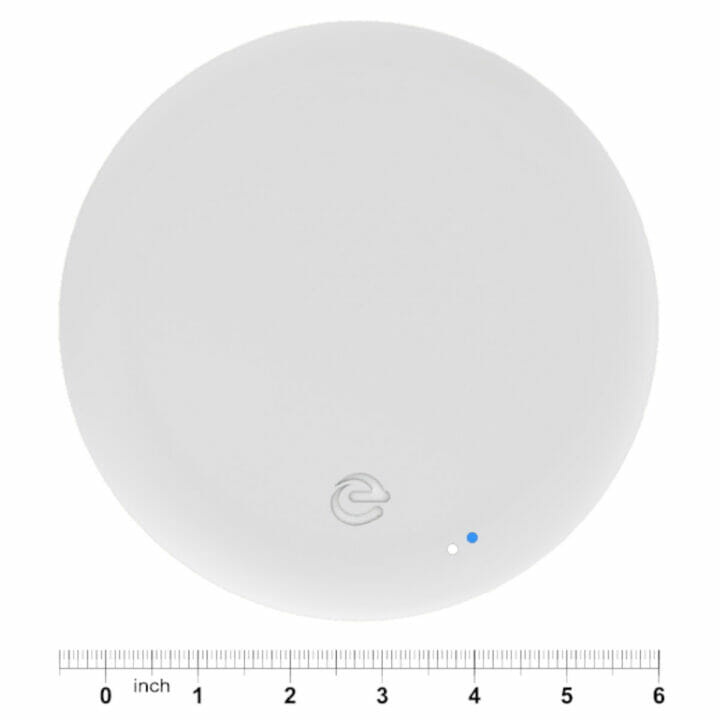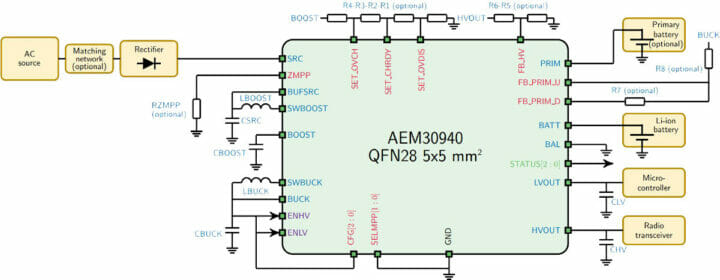Two years ago, we noted Energous’ WattUp hearables developer kit that would charge earbuds with the company’s WattUp near-field wireless charging technology. The company has now introduced the WattUP 1W active energy harvesting developer kit capable of charging multiple IoT devices with at-a-distance wireless charging.
The kit is said to be “active” because there’s a 6-inch transmitter, let’s call it a power gateway, and several IoT devices that harvest energy from it. Traditional passive solutions will harvest ambient energy from the surrounding environment, and may not deliver enough power, and do so unpredictably.

The developer kit comes with the transmitter, plus one or more receiver units, and relies on the following main chips:
- Transmitter
- Dialog Semiconductor DA14682 SmartBond Bluetooth 5.0 Cortex-M0 SoC
- Dialog Semiconductor DA4100 Wireless Power Transmitter SoC
- Dialog Semiconductor DA3210 1W Power Amplifier
- A discrete rectifier and a DA2210 WPT rectifier
- Receiver(s)
- Dialog Semiconductor DA14531 Cortex-M0+ BLE 5.1 SoC @ 16 MHz plus on-board and external antenna
- Optional E-ink display
- e-peas AEM30940 RF harvesting PMIC
- Low Voltage Operation from 50mV to 5V
- Cold Start from 380mV input voltage
- 3x configurable RF input paths including discrete and DA2210 options.
- Supercap energy storage device with support for a rechargeable lithium battery
- An ambient light sensor and a temperature/humidity sensor

Besides the transmitter and receiver hardware, the kit also comes with a mobile app to monitor and control TX/RX, schematics and layout files, antenna design files, and mechanical files. Not once the company mentions range, which feels really odd for an “at-a-distance” wireless charging solution. But we are told the solution is suitable for smart buildings, industrial IoT sensors, and retail electronic displays, so it should probably be more than just a few centimeters. Both the transmitter and receivers are equipped with Bluetooth so it should also be possible to get data from the receiver’s sensors through the transmitter.
The developer kit is aparently not designed for the hobbyist wanting to experiment with wireless charging in his/her garage, but it’s made for companies that “are looking at taking wireless charging to mass production with a designated product or group of products”, and an NDA must be signed to be able to discuss the project details like power requirements. The press release also mentions “1W of conducted power in a specific area or direction”, so the antennas arrangement can probably be tweaked, which would explain why we are not given a specific charging range. More details can be found on the Energous developer kits page, where you’ll also notice a 5.5W active energy harvesting developer kit that was announced earlier this year.

Jean-Luc started CNX Software in 2010 as a part-time endeavor, before quitting his job as a software engineering manager, and starting to write daily news, and reviews full time later in 2011.
Support CNX Software! Donate via cryptocurrencies, become a Patron on Patreon, or purchase goods on Amazon or Aliexpress




